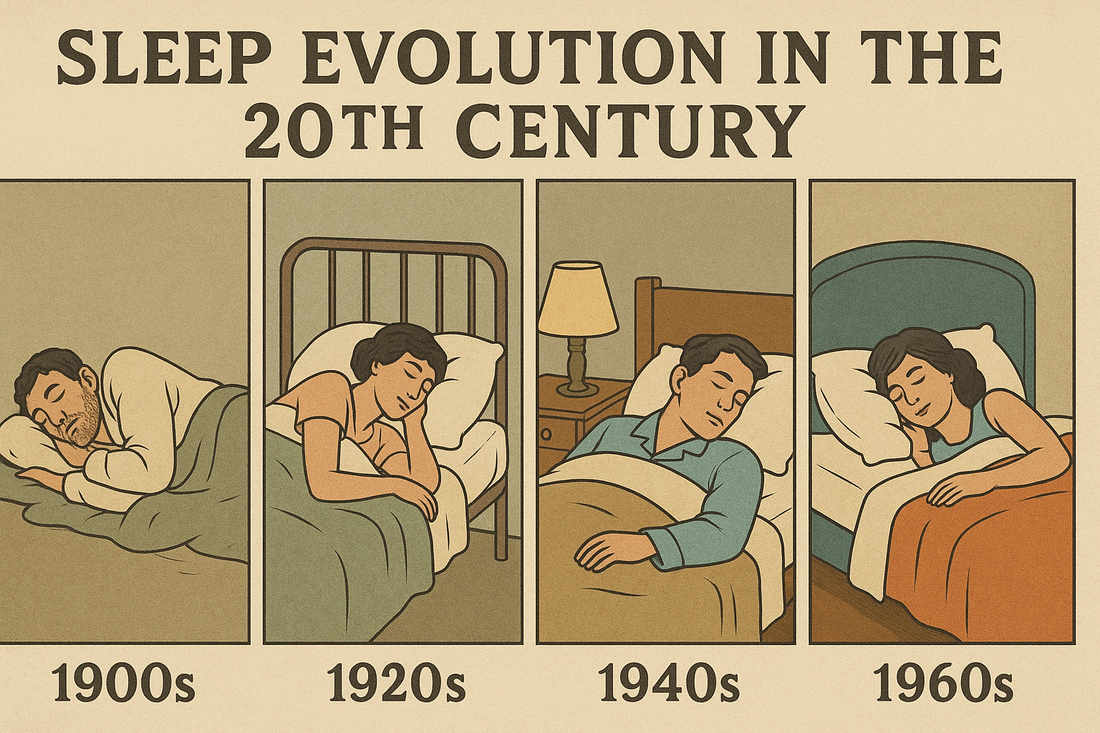
The Evolution of Sleep Quality in the 20th Century
Sleep is one of the most essential pillars of human health, yet its quality has dramatically shifted over the decades. As we look back at the 20th century—a time marked by rapid industrialization, global conflicts, and groundbreaking technological progress—we can trace the ways sleep quality was influenced, for better or worse.
The Early 1900s: Simpler Times, Longer Nights

At the dawn of the 20th century, most households still lacked electric lighting, central heating, or noisy urban surroundings. Sleep patterns often followed the natural cycle of day and night, with many people going to bed shortly after sunset and waking with the sunrise.
In rural and agrarian settings, where the majority of people still lived, the absence of modern distractions (like television or smartphones) allowed for longer sleep durations—often between 8 to 9 hours a night. While sleep wasn't yet widely studied in scientific terms, its quality was deeply tied to the rhythms of nature and physical labor.
The 1920s–1940s: Industrialization and War-Time Wakefulness

The interwar years and the Great Depression brought changes to both work and lifestyle. Urbanization accelerated, and shift work became more common in factories, leading to irregular sleep schedules for many workers. During World War II, blackout curtains became standard in many cities, not for sleep, but to avoid enemy air strikes—ironically helping to darken rooms for deeper rest in some cases.
However, stress and anxiety during wartime, especially for soldiers and civilians in bombed cities, disrupted sleep patterns significantly. Nightmares, insomnia, and sleep deprivation were common and often untreated.
The 1950s–1960s: The Birth of the Sleep Science Era

By the mid-century, researchers like Nathaniel Kleitman and his student Eugene Aserinsky made groundbreaking discoveries—most notably, the REM (rapid eye movement) stage of sleep. These decades marked the birth of sleep medicine as a scientific field.
Meanwhile, post-war prosperity introduced television sets into homes, creating a new nighttime distraction. The growing popularity of caffeine and the rise of 24-hour diners also subtly began to chip away at natural sleep rhythms.
Despite this, a 1959 Gallup poll revealed that most Americans were still averaging 8.5 hours of sleep a night—higher than today's average.
The 1970s–1980s: Modern Work Culture and the Rise of Sleep Disorders

As global economies boomed, so did the glorification of productivity. The 9-to-5 workday, long commutes, and two-income households placed increasing pressure on sleep time. By the 1980s, more people began reporting issues with insomnia, snoring, and night-time wakefulness.
Technological distractions multiplied: cable TV, video games, and late-night talk shows became nightly fixtures. Meanwhile, the medical community began to formally recognize disorders like sleep apnea and narcolepsy.
Still, public awareness of sleep as a cornerstone of health lagged behind. Pulling all-nighters and working late were often viewed as signs of dedication and ambition.
The 1990s: Digital Disruption Begins

The 1990s ushered in the internet age—and with it, a new era of sleep disruption. The blue glow of computer screens became commonplace, and late-night browsing or work-related emailing began to creep into what had once been protected rest time.
At the same time, sleep research gained traction in public health discourse. Experts began linking poor sleep quality to a growing list of chronic diseases—obesity, hypertension, diabetes, and depression among them.
Despite this rising awareness, the average sleep duration began to decline below 7 hours for many working adults in industrialized nations.
Conclusion: A Century of Shifting Sleep
The 20th century transformed sleep from a naturally synchronized, protected part of daily life into a fragmented, often-neglected necessity. From candles to cable TV, and from early bedtimes to all-nighters fueled by coffee and ambition, our sleep patterns have evolved—sometimes at the cost of our health.
Yet, as the century came to a close, it also left us with critical knowledge: that sleep is not a luxury or weakness, but a foundation for well-being. And that reclaiming it in the 21st century may be one of the most revolutionary acts of self-care.
